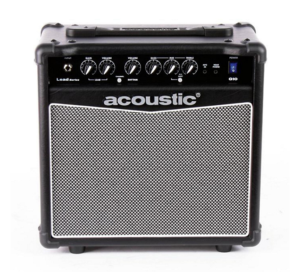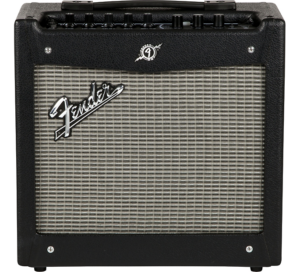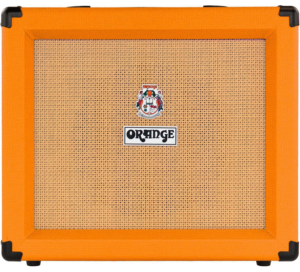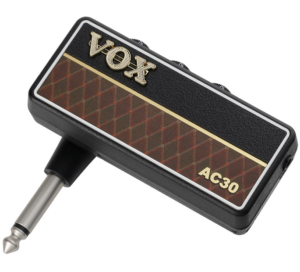Just Make Some Noise…
When you’re ready to buy your first amp a good rule of thumb is – just get something that makes sound and don’t spend too much money on it. Most amplifiers fit into that category so it’ll be tough to go wrong. Once you get used to the sound and feel of playing an electric guitar through an amplifier, you’ll naturally become interested in how to get some of those elusive sounds you hear on records. For those who are ready to upgrade or who really want to invest into a first amp that will carry them beyond the beginner phase, below are some general criteria on choosing an amp as well as a few specific recommendations.
Going to ’11’
The following are some controls to look for when purchasing a guitar amplifier:
- Volume – All amps have at least one. Self explanatory, moving on…
- Tone – Look for at least one basic tone knob or even better, separate bass and treble contols
- Gain – This will be a 2nd volume type knob but it controls the amount of distortion or “dirt” present in the sound. Necessary for reproducing rock guitar sounds from the Who all the way to Metallica and beyond. The more you turn up the gain, the less polite your guitar will sound.
- Channel switch – This isn’t a requirement but it sure is handy. It switches between a clean channel and a gain channel (think early Beatles vs. AC/DC)
Amplifier Types
- Tube – Utillizes vacuum tubes for amplification, similar to those used in old radios and TV’s
~Pros: Considered to be the best sounding of all options
~Cons: Can be expensive to purchase and maintain; limited in range of sound options - Solid State – Uses transistors for amplification
~Pros: More affordable than tube amps
~Cons: Often considered to sound “sterile” compared to “warmth” of tube amps - Digital – These are generally solid state amplifiers that use digital “modeling” technology to
emulate the sound of classic tube amplifiers. Most digital amps have a wide range of modeled amplifiers to choose from.
~Pros: More affordable than tube amps with often vast sound options
~Cons: The many options can be overwhelming and confusing; Programming presets to taste can be daunting.
Speaker Types
- Combo Amp- Speaker and amplifier are combined into one unit. Speaker sizes range from 8″ to 12″ and can be single or twin.
- Head/Cabinet – The amplifier (head) and speaker (cabinet) are two separate units, allowing the user to mix and match different speaker types and sizes with the primary amplifier. Guitar speaker cabinets usually house 10″ or 12″ speakers and can contain one, two or four speakers.
So What Do I Buy?
Amps become a very personal choice very quickly. With all the different features and options, as well as the intended purpose for which you’re buying the amp, it can be tricky to make general recommendations, but here goes…
Acoustic G10 and G20

solid first amp choice
Features: Solid State combo, 2 channels, 3 tone controls, 8″ speaker (G10) or 10″ (G20), headphone out
Notes: A rock solid first amp choice. The G20 will be capable of more volume and bass response than the G10, otherwise the same amp.
Fender Mustang I V.2 20W

lots of sound options
Features: Digital modeling combo, 18 amp models, 2 tone controls, 8″ speaker, headphone out
Notes: This amp has a lot of sounds if you don’t mind some fiddling time
Orange Crush 20RT and 35RT

best solid state has to offer
Features: Solid State combo, 2 channels w/footswitch jack, 3 tone controls, reverb, 8″10″ speaker (20RT) or 10″ speaker (35RT), headphone out
Notes: Pricier than the other options but well worth the investment. These amps sound almost as good as a tube amp and are suitable for beginner and beyond.
One Last Thought
For those who want a basic amp sound and don’t want to disturb the neighbors or aren’t concerned about having a “proper” amplifier with a speaker, Vox makes a cool little (tiny actually) headphone amp that plugs right into your guitar jack. Pretty cool!

Vox amPlug 2 AC30
